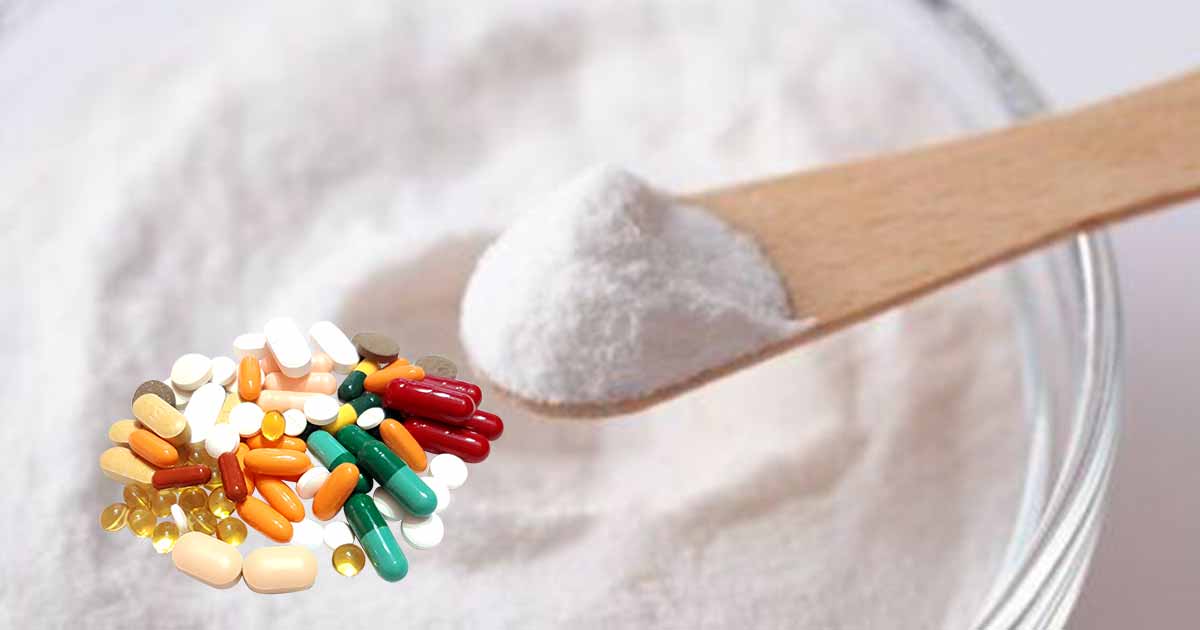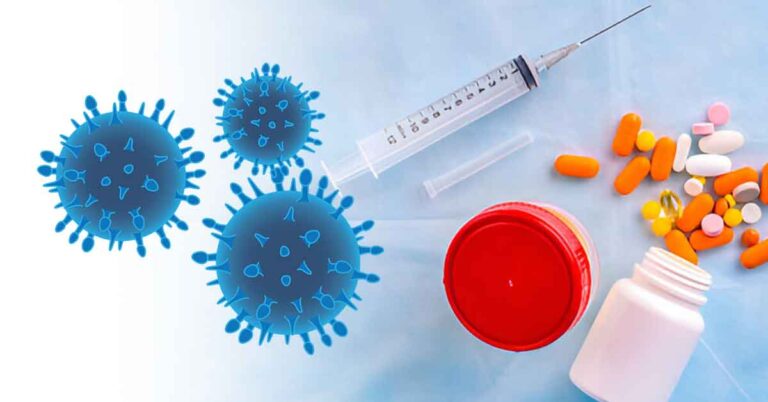Pharmaceutical preservatives are chemical substances that tend to improve the shelf life of drugs either by inhibiting oxidation of the active ingredients and excipients thereby preventing microbial infection and other chemical contamination. Most drug formulations, food products, and cosmetic products are incorporated with preservatives to curb microbial growth.
Preservatives are used to stabilize the products, increase the shelf-life, prevent microbial attack, and to enhance the activity and efficacy of the medication.
Properties of an Ideal Pharmaceutical Preservative
An ideal pharmaceutical preservative should be:
- Not be toxic
- Effective at a low concentration against microbial growth (potency)
- Compactible with other ingredients in the formulation
- Should not elicit irritation
- Physically and chemically stable for the shelf-life of the formulation
- Have fairly constant activity from manufacturing to shelf-life to the use of the drug.
- An effective antimicrobial agent with wide spectrum of activity.
- Able to decrease the percentage of microbes, either by microbiocidal or microbiostatic mode of action.
Factors affecting the Efficacy of Pharmaceutical Preservatives
The efficacy of the pharmaceutical preservative is affected by factors such as: the preservative interaction with the formulation, types of microbes, influence of pH, effect of the container, and properties of the preservatives.
The type of microbes: Plant products are altered by microorganisms such as Clostridium species, Bacillus anthracis, while Salmonella typhi modify animal products. Gelatin products are impacted by tetanus spores and gas gangrene.
Features of the preservatives: Some preservatives lose their antimicrobial action when they react with leached substances from the container. Also, the preservatives should be very soluble and uniformly homogenous in the bulk phase.
When the pH is unfavorable, preservatives like chlorobutol may hydrolyze on storage.
Interaction with the formulation: Methylcellulose, alginates, tragacanth are hydrocolloids that interact with preservatives, reducing their activity. The oil phase of emulsion, and tablet additives also interact with the preservatives.
The nature of oil, oil water ratio, type of concentration of emulgent, influence the concentration of preservatives that can protect the system.
Influence of pH: Activities of cationic active quaternary ammonium compounds (Benzalkonium chloride, Alkyl Dimethyl Ethyl Benzyl Ammonium, Etilbencil chloride, and Dioctyl Dimethyl Ammonium Chloride) are much enhanced at higher pH. However, most preservatives are not altered by pH.
The adjustment in pH may alter the chemical stability and activity of the preservatives.
Effect of containers: Some container types such as plastic and rubber may interact with the pharmaceutical preservatives, as it can penetrate them. Glass containers are better in retaining the preservatives, especially when it is airtight.
Wrong choice of containers and closures can lead to microbial contamination. For instance, screw–capped containers and corks can introduce mould spores.
Classification of Pharmaceutical Preservatives
Pharmaceutical preservatives are classified:
Based on the Mechanism of Action
- Antioxidants
- Antimicrobial agents
- Chelating agents
Antioxidants:
Some antioxidants such as Butylated hydroxy anisole (BHA), Butylated hydroxy toluene (BHT), vitamin C, vitamin E prevent oxidation of active pharmaceutical ingredients that are sensitive to oxygen, and may undergo degradation due to oxidation.
These antioxidants by their self reducing activity reduce oxidation of active ingredients and excipients, by formation of free radicals.
Antimicrobial agents:
The antimicrobial agents have activity against gram positive & gram negative microorganism that may degrade pharmaceutical products, by inhibiting cell wall, cell membrane growth, or other organelles in microorganisms.
They reduce the risk of spoilage, and kill microbes introduced during storage or repeated use of a multi-dose container.
Products with liquids such as liquids, suspensions, eye drops, emulsions, injectables, topical creams, ointments are at the risk of microbial contamination.
Factors such as the dose, level of contamination, physicochemical properties of drugs, chemical structure, storage temperature of drug, design of drug pack, and range of activity affects antimicrobial preservatives’ efficacy. Some examples include benzoates, sodium benzoate, sorbates.
Chelating agents:
Some compounds such as citric acids, ethylenediaminetetraacetic acid (EDTA), and polyphosphates form a complex with the pharmaceutical product and prevents degredation of products.
Classification Based on Source
Natural Preservatives
These types of preservatives are from natural sources such as plant, animal, and mineral products. Examples include: rosemary, lemon, honey, neem oil, sugar, vinegar, salt (sodium chloride), diatomaceous earth.
Artificial Preservatives
These types are chemically synthesized in the laboratory and are effective in low concentration. They include sorbates, benzoates, sodium benzoate, propionets, and nitrites.
Another class of pharmaceutical preservatives target enzymes in pharmaceutical products that continue to metabolize.
Examples of Pharmaceutical Preservatives
Benzoic acid
Used as both food, beverage preservatives and as antiseptic. It inhibits the multiplication of moulds, bacteria, and yeast, but does not kill it. For liquid oral preparation, the recommended concentration is 0.1 to 0.2%. Benzoic acid is used mostly in carbonated beverages, as it does not affect the taste or odor of the drink when used in low concentration. The best pH for the activity is pH 2.5–4.0.
Benzoic acid is an aromatic acid, white crystalline powder. It is poorly soluble in water but very soluble in alcohol, ether, and benzene. Since it is not very soluble in water, the water-soluble salt sodium benzoate is used instead in solution requiring large water volume.
Excessive benzoic acid can cause diarrhea, abdominal pain, or interfere with the metabolic processes in the body. The US FDA stipulates that the benzoic acid levels for general types of food at 1000 mg kg− 1. The Chinese laws keep benzoic acid addition at 200 mg kg− 1 for carbonated drinks.
Ethyl alchohol
The pharmaceutical preservative, ethyl alcohol, is an antimicrobial preservative used in pharmaceutical and cosmetic industry. Ethanol is used as a solvent, and additionally a disinfectant and a preservative. It is soluble in water, glycerin, chloroform. The topical ethanol solution is used as a penetration enhancer in transdermal drug delivery.
Ethanol is bactericidal between 60% and 95% v/v, but optimally at 70% v/v. However, it is inactive against bacterial spores, and is inactivated by nonionic surfactants.
Benzalkonium chloride
Benzalkonium chloride is a quaternary ammonium compound. The antimicrobial pharmaceutical preservative is used for eye-drops, and most topical multi-use ophthalmic preparations.
It is used at the concentration of 0.01%. In higher concentration, it can also serve as an antiseptic and disinfectant.
Methylparaben
Methylparaben is a white crystalline powder with a slight burning taste. It used to preserve pharmaceutical products, as antiseptics and also for food and cosmetic products. In fact, it is the most used antimicrobial preservative in the cosmetic industry. It is an antimicrobial preservative used alone or together with other parabens. Popylene glycol (2-5%) and midurea can be combined with methylparaben to increase the activity.
It works over a wide range of pH (4-8) and has a broad spectrum of activity against bacteria, but more against yeasts, and molds. The activity may decrease with increasing pH as it forms phenolate anion.
Methylparaben may be incompatible with nonionic surfactant like polysorbate 80, and substances such as sugars, sodium alginate, bentonite, magnesium trisilicate, tragacanth, talc, essential oils, sorbitol, and atropine.
Methylparaben is free soluble in water, and alcohol when used as sodium salt. It has a characteristic odor. The concentration required for liquid oral preparation is 0.25%, and 0.01 to 0.5% for other preparations.
Due to the irritant nature, methylparaben is not suited for injections and ophthalmic preparations.
Propyl paraben
Propyl paraben is a widely used pharmaceutical preservative. The antimicrobial compound is used in both pharmaceutical and cosmetic products such as shampoos, moisturizers, shaving gels, makeup, toothpaste, lubricants, topical and oral preparations, and as food additive.
For liquid oral preparation, the recommended concentration is 0.5 to 0.25%.
Bronopol
A white crystal and organic compound with wide-spectrum antimicrobial activity. Initially used as a pharmaceutical preservative, it is now a microbicide or microbiostat widely used for industrial purposes.
Chlorobutanol
Chlorobutanol is an acohol-based pharmaceutical product with broad-spectrum antibacterial and antifungal properties. It has no surfactant activity. It has weak local anesthetic action, and also sedative-hypnotic effect.
It is a long-term stabilizer of multi-ingredient preparation, used at concentration of 0.25 to 0.5%.
Chlorbutanol is a common detergent preservative in eye drops and other ophthalmic formulations.
Benzyl alcohol
Benzyl alcohol, also is an aromatic alcohol, and pharmaceutical preservative used at the concentration of 0.5 to 10%. The antimicrobial agent is used in multidose medication vials and parenteral solutions.
It also has local anesthetic and antipruritic activity.
Ascorbic acid
Ascorbic acid, or vitamin C is an antioxidant used as pharmaceutical preservative at a concentration of 0.01-0.1% w/v in aqueous formulations. It is used to adjust the pH of injection solutions, as adjuvants for oral liquids, and as stabilizing agent in mixed micelles containing tetrazepam.
Ascorbic acid is white, or light-yellow, odorless, non-hygroscopic, crystalline powder. It has a sharp, acidic taste, and the color darkens on exposure. It should be protected from light, and stored in an airtight container.
The best pH for stability is 5.4. In powdered form, it is stable in air, and also in heat when there is no oxygen, or oxidizing agent. However, it is unstable in solutions, especially alkaline solutions, due to oxidation.
Ascorbic acid is incompatible with alkalis, heavy metal ions, oxidizing materials, theobromine salicylate, sodium salicylate, phenylephrine hydrochloride, salicylamide, sodium nitrite, methenamine, phenylephrine hydrochloride, picotamide.
Alpha tocopherol
Alpha tocopherol is an antioxidant and the source of vitamin E. It is a clear, colorless or yellowish-brown, viscous, oily liquid. Other forms such as beta, delta, and gamma tocopherols are better antioxidants. It is a highly lipophilic compound that helps to solubilize many poorly soluble drugs.
It is used in fat-based and oil-based pharmaceutical preparations at concentration of 0.001-0.05% v/v. Its effectiveness is increased by adding oil-soluble substances like lecithin, and ascorbylpalmitate.
Alpha tocopherol is also a good plasticizer and can also be used in developing deformable liposomes as topical formulations.
Sodium benzoate
It is a white crystalline slightly hygroscopic powder, that is soluble in water and alcohol. The antimicrobial pharmaceutical preservative is bacteriostatic, with fungistatic activity. The pharmaceutical preservative is used to preserve food, pharmaceutical and cosmetic products. It has been used as tablet lubricant at 2-5%w/w concentrations. It has faint odor, unpleasant sweet and saline taste.
The recommended concentration for liquid oral formulation is 0.1 to 0.2%. It is effective over a low range of pH. Sodium benzoate is preferable in some cases to benzoic acid due to its solubility, but it may impart unpleasant taste to products.
Sodium benzoate is incompatible with ferric salts, salts of heavy metals, gelatin, calcium salt, quaternary compounds, salts of heavy metals like silver, lead, and mercury. Interaction with kaolin
or nonionic surfactants reduce activity.
Sodium sulfite
Sodium sulfite or disodium sulfite is an odorless white hygroscopic powder used in the same way as sodium metabisulfite. It is also an antimicrobial pharmaceutical preservative used against fungi at low pH (0.1% w/v of sodium sulfite). It is partially soluble in water, soluble in glycerin, and insoluble in ethanol.
Sodium sulfite is used in pharmaceutical preparations such as oral and topical products, inhalation, parenteral preparations.
Sorbic Acid
Sorbic acid was first isolated from the berries of the ash tree. The free acid form is a stronger inhibitor of molds, yeasts, and fungi than the sodium and potassium salt (sodium sorbate and potassium sorbate). The antimicrobial activity increase with decrease in pH.
Combining sorbic acid and lactic acid will lead to inhibition of Salmonella. Also, sorbic acid is used to prevent yeast and molds in various foods 200–2000 mg/kg (liquid egg 5000 mg/kg, cooked seafood 6000 mg/kg), soft drinks, wine, fruit juice, cheese, pastries etc. The quantity in sacramental grape juice is 2000 mg/kg, while for liquid tea concentrates, it is 600 mg/kg. It is also used in processed meat.
Sorbic acid acceptable daily intake is 25 mg/kg body weight.
Sodium chloride
Also called common salt, alberger, sea salt, table salt, sodium chloride is a white crystalline powder or colorless crystals, with saline taste. Formerly, it was used as diluent and lubricant in capsule and tablet formulation.
Now, sodium chloride is used to produce isotonic solutions in both parenteral and non-parenteral pharmaceutical preparations. Other uses include channeling agent and osmotic agent in the cores of controlled-release tablets, to control drug release from microcapsules, and as aporosity modifier in tablet coatings.
However, aqueous sodium chloride is corrosive to iron. It also forms precipitates with silver, lead, and mercury salts. The solution also decreases the solubility of methyl paraben, another preservative, and also the viscosity of carbomer gels and solutions of hydroxylethylcellulose or hydroxypropyl cellulose.
Potassium benzoate
Also called benzoate of potash; benzoic acid potassium salt, potassium benzoate is an antimicrobial used in food, beverage and pharmaceutical products. It is an alternative to sodium benzoate when low sodium is necessary. The recommended daily intake of total benzoates is 5 mg/kg of body weight.
Potassium benzoate is a white, odorless, crystalline powder that is slightly hygroscopic. In aqueous solutions, it is slightly alkaline and have a sweetish astringent taste.
It is effective at pH 4.5 or lower (lower pH is good for its activity but at lower pH, but it may impact a slight taste). Potassium benzoate is incompatible with strong acids and strong oxidizing agents.
Potassium benzoate may cause allergy in asthmatics, and irritation to mucous membrane.
Test for Preservatives Efficacy
- Pharmacopoeial antimicrobial effectiveness tests (AET)
- Preservative efficacy tests (PET)
- Other newer tests being investigated such as ATP bioluminescence, Spectro-fluorimetry, Electrical impedance spectroscopy, and Chemiluminescence.
Pharmacopoeial antimicrobial effectiveness tests (AET)
It is used to test for a pharmaceutical preservative effectiveness in multi-dose dosage form. It evaluates for the microbes introduced during and after manufacturing.
This involves inoculating the product with a known quantity of microorganisms. The original container should be used, and is protected from light, and incubated at ambient temperature for 28 days. The death rate after 28 days is compared to the acceptable levels for the product.
Preservative efficacy tests (PET)
The test involve challenging a product with a defined number of colony forming units (cfu) of test microorganisms such as bacteria (Staphylococcus aureus, Pseudomonas aeruginosa), yeasts, and fungi/mould (Aspergillus niger, Candida albicans), enumeration at time zero. Then the kill or survival rate is monitored at specific time intervals up to 28-days at room temperature.
The test is examined using duplicate plate count method.
References:
- https://labmonk.com/notes/wp-content/uploads/2019/04/UNIT-5.3-PRESERVATION-OF-PHARMACEUTICAL-PRODUCTS.pdf
- https://www.pharmatutor.org/pdf_download/pdf/Vol.%204,%20Issue%205,%20May%202016,%20PharmaTutor,%20Paper-3.pdf
- https://www.sciencedirect.com/topics/agricultural-and-biological-sciences/benzoic-acid
- https://pubchem.ncbi.nlm.nih.gov/compound/Bronopol#section=Structures
- https://go.drugbank.com/drugs/DB11386












